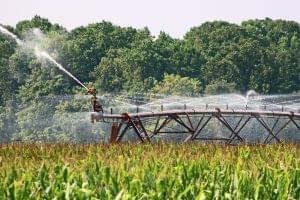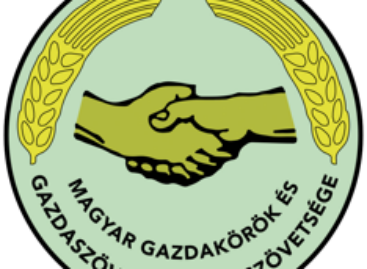Hungary’s largest irrigation development investment has been completed in Mezőhegyes
Thanks to the HUF 10.5 billion program, the irrigable land area of Nemzeti Ménesbirtok és Tangazdaság Zrt. has doubled.

(Photo: Pixabay)
Agriculture Minister István Nagy said at the handover ceremony that irrigation farming is one of the most complex systems today, which serves to improve the competitiveness of agriculture and achieve food sovereignty. “We are now at this milestone,” he said. It’s a milestone because we recognized the problem, we looked for a solution, and we can implement it with the appropriate technological standards – said the minister, who said that “this is today’s message.” The head of the ministry highlighted that soil moisture is decreasing across Europe; 46 percent of Hungarian land was affected by drought this year. The water must be stored for later use when there is an abundant flow of water, but not only irrigated, but also changes in soil cultivation, and the genetic potential of the seeds must also be recognized. He called it sad that in 2021, only 85,000 hectares, approximately half of the 174,200 hectares of irrigated land authorized by water law, were irrigated. The government has set a goal of doubling the irrigated areas by 2024, reaching 200,000 hectares, and by 2030, irrigated farming will take place again on 350,000 hectares, he said. István Nagy spoke about the fact that irrigation investments and irrigation communities are particularly supported within the framework of the Rural Development Program. Applications can be submitted until the end of June next year. So far, 753 producers have received HUF 46 billion in support. Recently, a decision was made on another 31 tenders worth 6.5 billion forints. Between 2023 and 2027, on the basis of the KAP Strategic Plan, about HUF 70 billion will be allocated to the development of irrigation farming, he pointed out. He added that they also support the cooperation of irrigation communities, 26 communities have already received HUF 1.8 billion in support; applications can be submitted until the end of the year.
The minister spoke about the fact that significant efforts have been made in recent years to develop irrigation farming
Irrigation communities have been established (142 are currently recognized, which operate irrigation on a total of more than 63,000 hectares; but 73 more communities are being formed), and irrigation investments worth tens of billions of forints have been realized. With the coordination of the Ministry of the Interior, eight reservoirs were built in the country in recent years, with a total maximum reservoir capacity of 5 million cubic meters, he explained. In his greeting, Attila Csányi, the machine supplier partner of the investment, vice chairman of the board of KITE Zrt., emphasized that approximately 30 percent of the agricultural output was lost due to this year’s drought summer; the economic damage is around HUF 500 billion. If this sum were to be used for irrigation development – calculated with 50 percent EU subsidy intensity projects – 9-10 percent of the domestic cropland, around 400 thousand hectares, could be irrigated – he said, adding that this would still only reach the level where it was in the 1970s we held in es years. Attila Csányi said that irrigation can be built for about HUF 3 million per hectare, and that the payback period for these investments has decreased to less than 10 years due to climate change. He added that KITE also operates a national meteorological network that also provides forecasts, and also provides soil cultivation and irrigation recommendations to farmers. He expressed his hope that the Mezőhegyes model project “can be a catalyst for a national irrigation development program that is now starting”.
For the Mezőhegyes investment, 8.5 billion forints were provided by the Hungarian state in the form of a capital increase; and the stud farm contributed HUF two billion as a contribution
Eighty-one irrigation machines were acquired, the total length of which is almost 38,000 meters. The machines can be started digitally, remotely, and operate with their own radio frequency control system.
The area that can be irrigated at the same time has increased from the previous 2,445 to 5,171 hectares, which is also significant at the European level. Irrigation water is provided from the Maros River. With the investment, in addition to hybrid corn, other crops became irrigated. By increasing the area that can be irrigated at the same time, plant cultivation can serve the demand for mass feed of robotic dairy farming. The construction works were completed in 13 months, the machine purchases and installations in 19 months. Construction works were carried out by Délút and Békés Drén.
In Hungary, 80,000-90,000 hectares – barely 1-2 percent of the arable land – are currently being irrigated. The EU average is three times that. The aim of the national irrigation development model program is to introduce an environmentally friendly, water-efficient, yet efficient technology in Hungarian agriculture, which, if applied over a large area, can guarantee the safety of production and increase its quantity. A model program for this took place in Mezőhegyes.
MTI
Related news
NAK and MAGOSZ initiated the announcement of the permanent water shortage period
Based on the extremely poor weather of the past period…
Read more >István Jakab: Hungary has the right to protect the health of the Hungarian people
Hungary has the right to protect the health of the…
Read more >The ice damage mitigation system started its seventh protection season
On April 15, the National Chamber of Agriculture (NAK) put…
Read more >Related news
2024 could already be the year of growth in retail
This year could be the year of growth in Hungary…
Read more >K&H: three thousand forints is not enough for two hamburgers today, two years ago it was three
“Child inflation” slowed further, but it is still 8 percent…
Read more >IMF: this year’s outlook for the world economy has improved minimally
According to the International Monetary Fund (IMF), overall, this year’s…
Read more >







